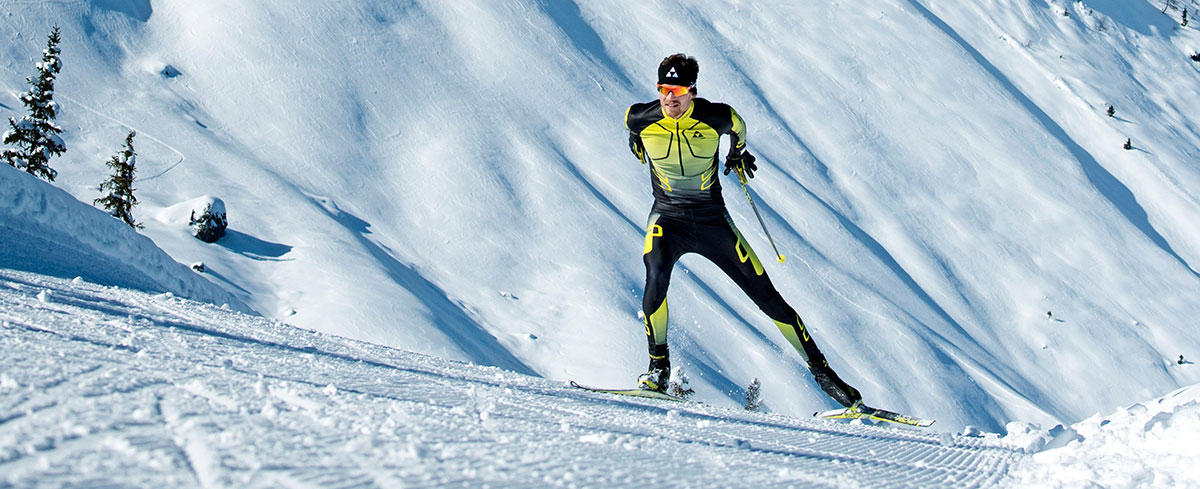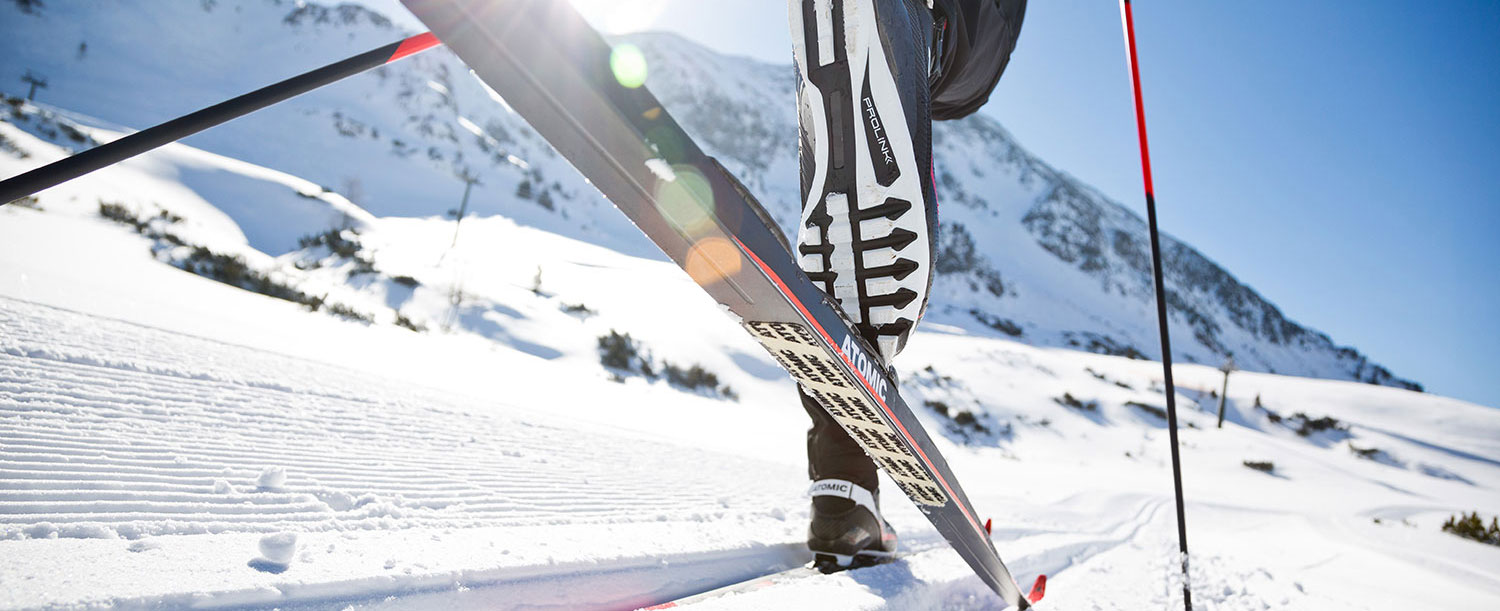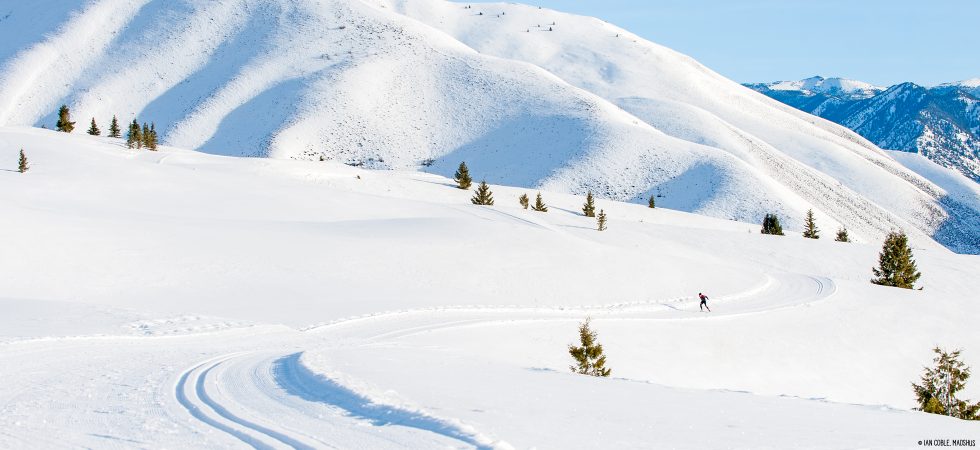Cross-country skiing or nordic skiing is becoming more and more popular within winter sports. You don´t need a lot of snow or time, even a lunch break is enough to get out on the ski trails. There are three different cross-country skiing styles and they differ mostly in their specific technique and the type of equipment you need for having the maximum of fun. Now there is another one: the classic no-wax skin ski style. We invite you to read our style guide to get an impression, what this sport is about.
Here you can find our general equipment guide which helps you to choose the matching equipment for your preferred cross-country skiing style.
Structure
CLASSIC STYLE
Everyone who wants to glide through beautiful snowy landscapes on a classic ski trail – two parallel tracks next to each other – should look into some new classic skis. Classic cross-country skiing is the most natural movement on skis. The technique is very similar to walking, just with skis on your feet and poles in your hands. The key part of this technique is a short kick, pressing the “kick zone” into the snow. The friction that is created through the kick and the kick zone, helps you to not slip back but instead move or better glide forward. You can go easy or push it hard and reach high speeds. There’s a broad range of equipment for every type of classic skier, so take a look into our Cross Country Skiing Guide Classic: Which Equipment do you need for Classic. Be classic and don’t be boring!
SKATING STYLE
Skating guarantees you fun and speed! The skating trails don’t offer such guidance like in classic cross country skiing, and this is part of the reason why skating is also called “free technique”. The key to the skating technique is the v-style: you create speed by pressing the edge of your ski into the snow, pushing hard against it. Then you transfer your body weight onto the other ski for gliding, like you can see perfectly in the picture below. The glide part is, what makes skate skiing so fast and fun. On the wide skating trails, it’s possible to reach up to 30km/h with good technique and light ski equipment. Even steep uphill sections or sharp turns on the trail won’t be a problem for you anymore. The skating technique is a bit more complex, but once learned you want to spend every free minute out in the snow … and you’ll get a perfect training for your entire body during the winter season! Check out our Cross Country Skiing Guide Skating: Which Equipment do you need for Skating to get an overview of what you need for having maximum fun in the skating track.

Photo: ©Fischer Sports GmbH, Berger Markus
BACKCOUNTRY STYLE
If you’re looking for real freedom on skis you might be a candidate for backcountry cross-country skiing. The backcountry ski is a perfect companion for skiing off the tracks, for longer day trips with a small backpack or even cabin trips. The skis in the backcountry range are made for accessing a lot of different terrains, built light and with metal edges. Even when crossing lower mountain ranges or fields you’ll feel agile and safe – in all kind of snow conditions. The character of the movement is almost identical to classic skiing, with a kick and glide phase, while keeping your skis parallel. The difference is, backcountry skis feel most comfortable in deep and fresh snow conditions, rather than in parallel tracks. This is the most original form of Nordic Skiing and it’s especially popular in Scandinavia. The “real cross-country skiing”: simply stepping out your door, crossing fields, valleys, and woods! Check out our Cross Country Skiing Guide Backcountry: Which equipment do I need for Backcountry to find out what fits you best.
 Photo: ©Ian Coble, Madshus
Photo: ©Ian Coble, Madshus
Classic no-wax Skin Ski Style
During the last years, as successor in the non-waxing-ski area of fish-scale skies, the skin-ski became established. Nowadays he skin-ski is an absolute trend concerning material in classic cross-country skiing. While the fish-scale ski performs best with ice-cold conditions in fresh snow, the skin-ski loves icy settings. Especially under this circumstances the skin-ski scores: a good grip uphill while reaching a speed, that makes you smile downhill. Only in terms of wet weather conditions skin skies need to get down with the trade-off that the performance on wet conditions is only fun when the skin-preparation is perfectly adjusted. Furthermore with new snow on the tracks gliding can be really difficult with skin skies. Read more in our Cross Country Skiing Guide Classic No-Wax Skin Ski: Which Equipment do you need for Classic No-Wax Skin Ski. By the way, no-wax means not that you don’t need wax, you only need no wax for the skins, the rest of the skis should be waxed as you are used to it with classic cross-country skis.

Photo: © Atomic
Are you interested in other related articles about Cross Country Skiing? We have some more for you:
Cross country skiing guide: Equipment
Cross country skiing guide: Equipment – Classic
Cross country skiing guide: Equipment – Skating
Cross country skiing guide: Equipment – Backcountry
Cross country skiing guide: Equipment – Classic No-Wax Skin Ski
Foto Header: Madshus


